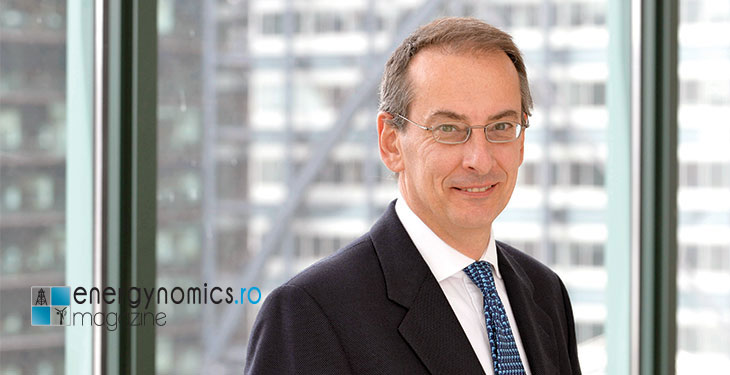This July, Matteo Patrone was appointed new EBRD Director for Romania. Few months later he managed to announce the revised strategy the bank has for Romania, with energy an important area in terms of investment priorities for the next four years. Matteo Patrone presented for energynomics.ro Magazine what are the hot spot on the local industry.
Mr. Matteo Patrone, please let’s start with an overview on this year in terms of investments and projects in energy where EBRD was involved. What does 2015 place in comparison with other of the recent years of EBRD involvement in Romania?
2015 was an important year for the EBRD in Romania. This was the year when we have reviewed our strategy for the country. The document was adopted on 30 September and sets out the investment priorities for the next four years. Energy is an important area. In particular improving corporate governance and management practices of companies in the sector and enhancing energy infrastructure are qualifying points of our strategy going forward.
An important EBRD investment in the country has been our syndicated loan of RON 675 million (€153.7 million equivalent) to CEZ Distribuție. It is very good example of an infrastructure investment which will have a lasting impact and benefit commercial customers as well as private households by rewarding responsible and sensible consumption. By doing so we are confident it can become a successful model which will attract many successors.
A number of other projects are in preparation and it would be premature to discuss them now. At the same time, I wish there were more activity on the capital markets and more infrastructure investments in the sector. The EBRD is certainly keen to consider supporting both.
EBRD expressed its aim to work for reducing regional disparities by financing essential infrastructure. Do you also take into consideration trans-national PCI projects? Have you identified any particular infrastructure project in energy to support? If it is not the case, for the moment, please describe the general criteria EBRD takes into consideration for this type of financial support.
EBRD is very interested in supporting trans-national investments, including PCIs. In the energy sector, the most important project is the BRUA PCI project, aimed at linking and developing the national gas system networks of Bulgaria, Romania, Hungary and Austria. Given the major benefits that this investment brings to all countries involved, the Bank is keen to follow and support this investment, as well as others that generate similar outcomes in the region.
Romanian authorities seem determined to maintain the new lighter support scheme for the renewable sector. Do you find it appropriate for the current moment and in the current European context? Did any of the projects you supported encounter any significant difficulties due to this new support scheme?
As you know the EBRD has significantly invested in Romania’s renewable market with its own finance and by mobilizing investment from other sources. We have financed 8 windfarms in the country, most of them in the Black Sea region of Dobrogea and six solar photovoltaic parks in Oltenia. Our total investment in Romania’s renewables stands at over €200 million. We have financed 620 MW of Romania’s 4,940 MW installed renewable energy capacity or 12.5 per cent. We are very proud to have made this significant contribution to helping Romania reach its renewable energy targets.
At the same time we have publicly expressed concern about the retroactive effects of the legislation changes in the renewable energy support scheme that the regulator, the government and the parliament have adopted over the last two years. The changes have already negatively affected the viability of operating projects, which were conceived and financed on the basis of different parameters. Consequently, some of EBRD’s projects had to be restructured, in order to take account of the legislation changes.
We support the various stakeholders’ efforts to find a common solution to this problem. Renewable generators must be put in the condition to repay their existing debt and also get an adequate equity return.
————————————-
The full version of this article can be read in printed edition of energynomics.ro Magazine, issued on December 2015.
In order to receive the next issue (March 2016) of energynomics.ro Magazine for free, we encourage you to write us at [email protected] to include you in our distribution list.

